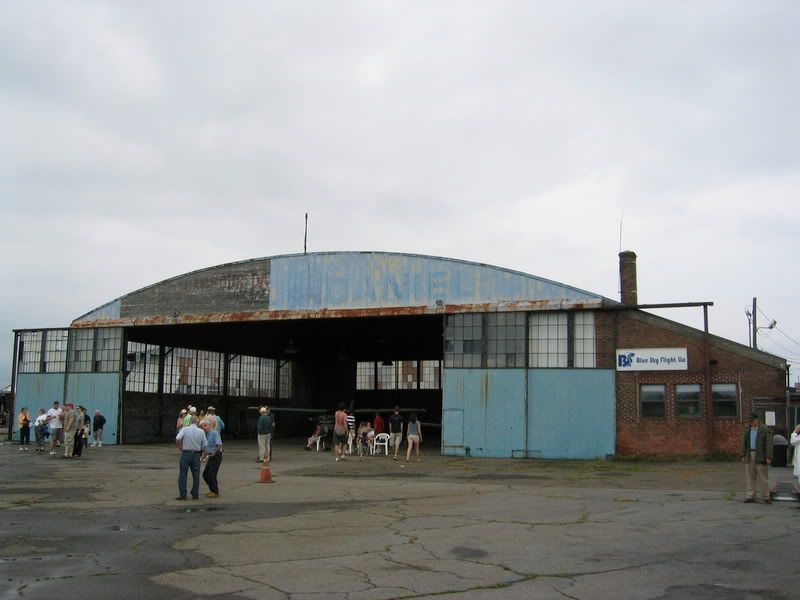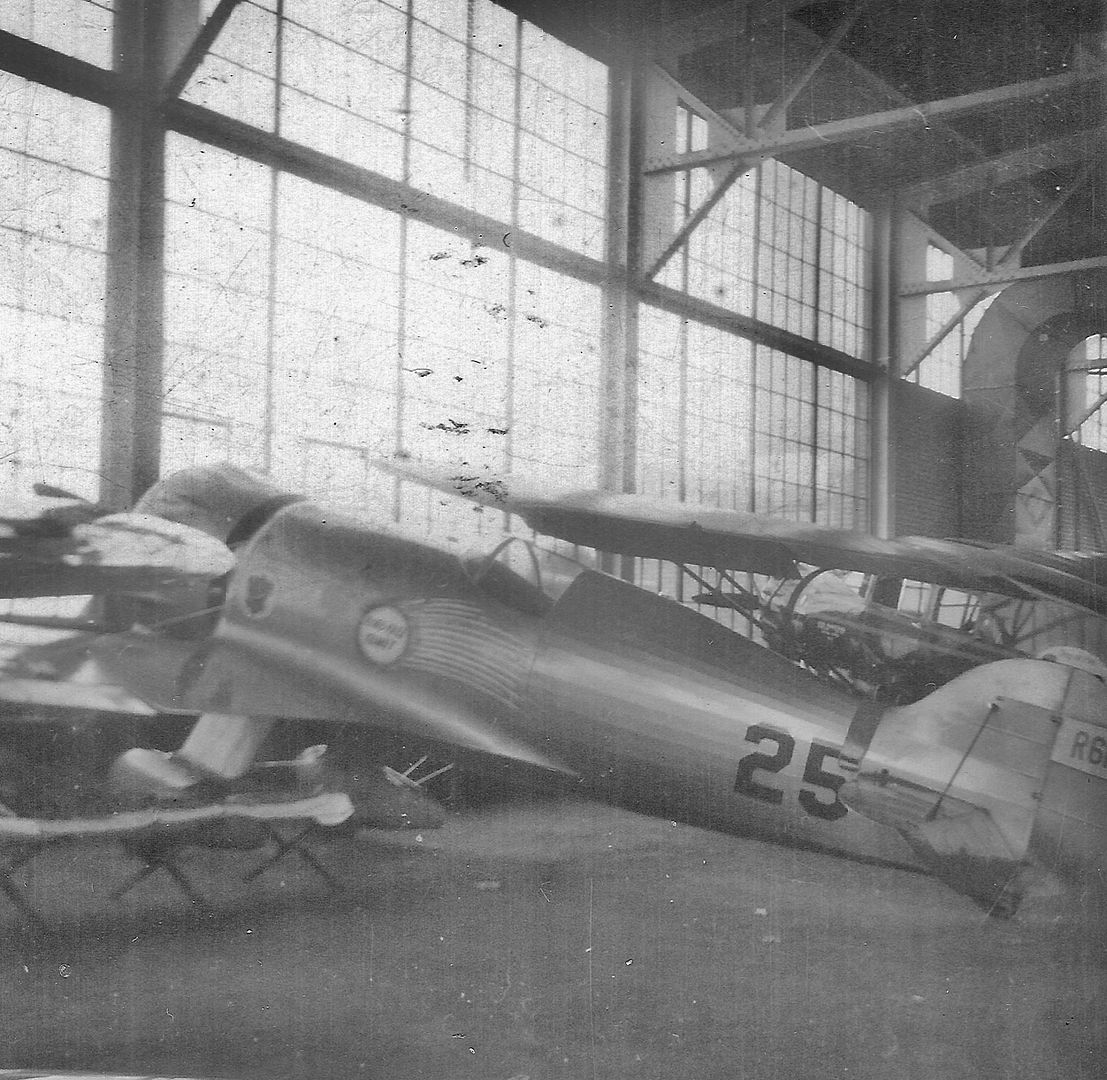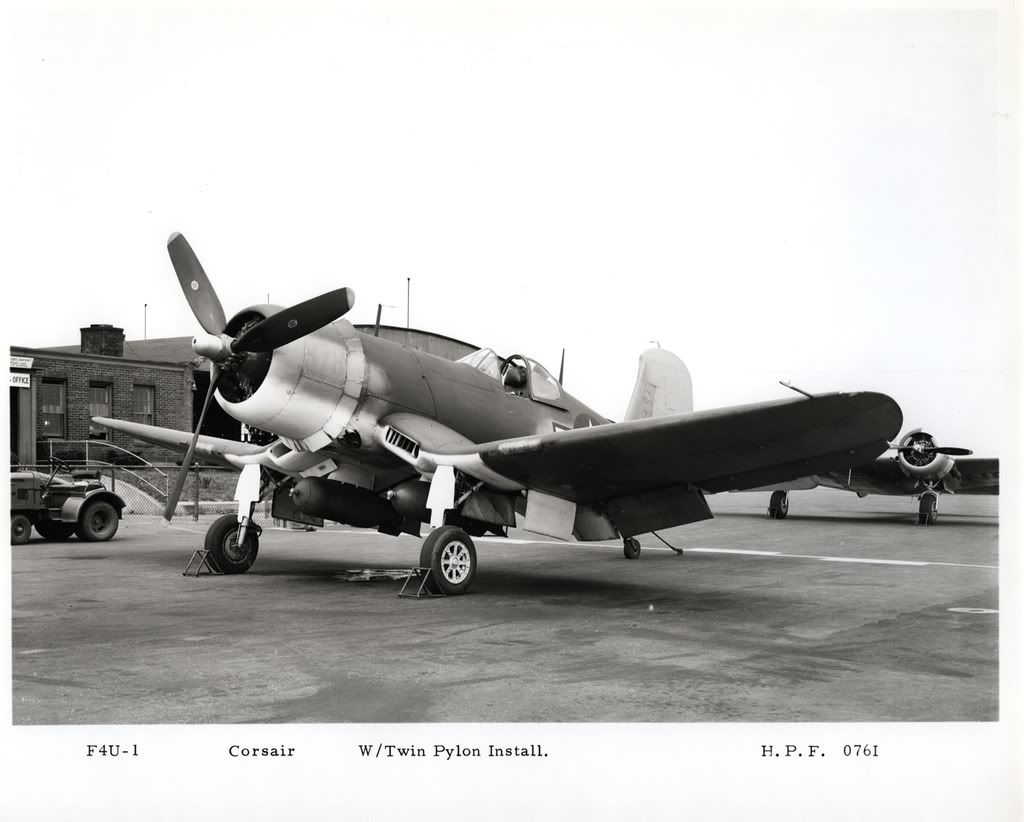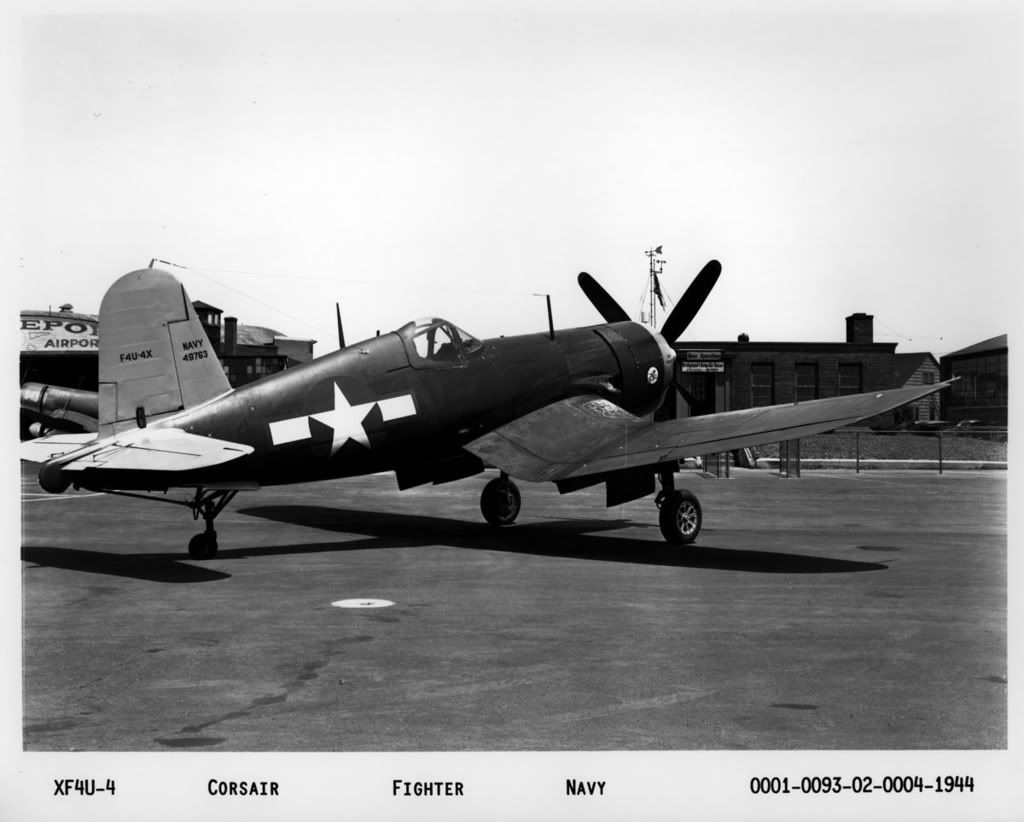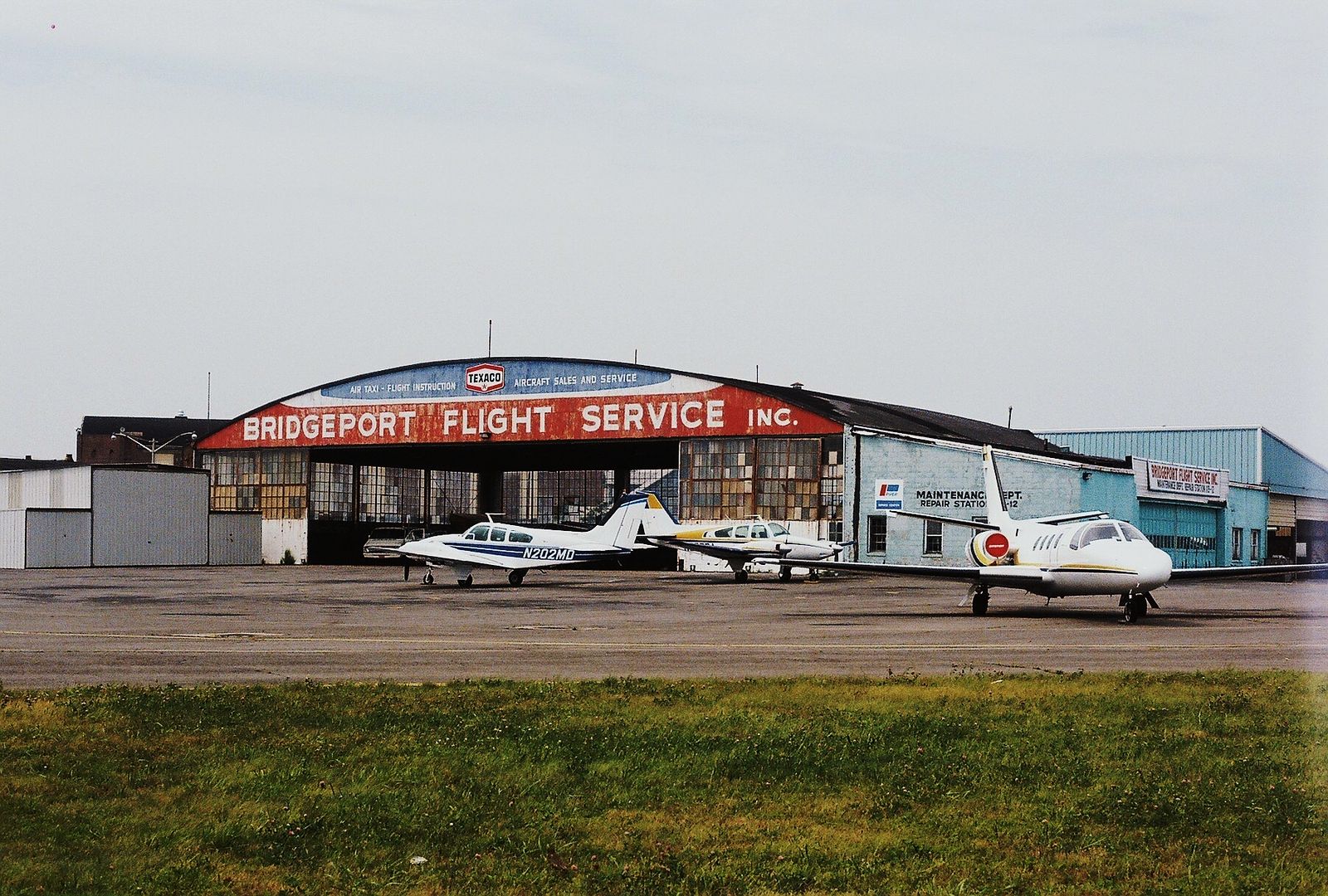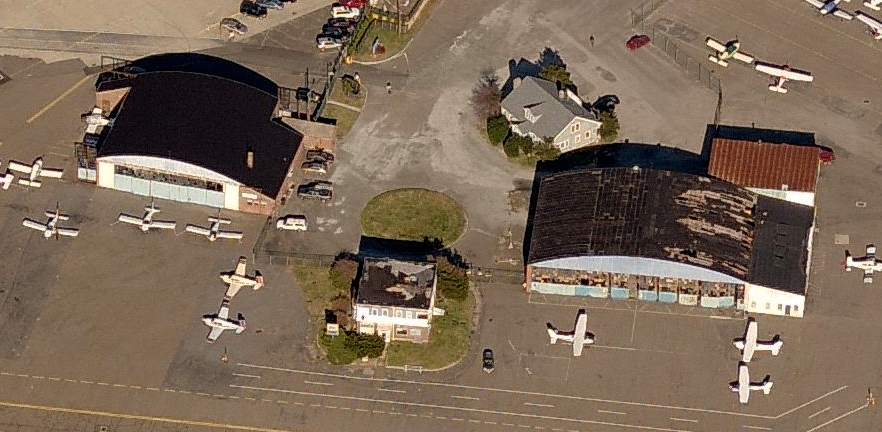Re: Sikorsky Memorial Corsair to Ezell Aviation
Tue May 10, 2011 10:45 am
Cherrybomber13 wrote:Yes chris should have them up red bubble next day or so
http://www.redbubble.com/people/warbirdwear/t-shirts/7156704-corsair-collaborative-project-logo

Re: Sikorsky Memorial Corsair to Ezell Aviation
Tue May 10, 2011 4:43 pm
Now to be a real nit picker.....Breckinridge seems a little to far North (maybe 2 Klicks) Other than that I want a shirt, really nice looking. Hey and where's the invasion stripes?
Re: Sikorsky Memorial Corsair to Ezell Aviation
Tue May 10, 2011 8:17 pm
Obergrafeter wrote:Now to be a real nit picker.....Breckinridge seems a little to far North (maybe 2 Klicks) Other than that I want a shirt, really nice looking. Hey and where's the invasion stripes?
Well let me just pick @ the nit-piker
If anything the "star" may be a little to far West
Being the size that it is it's about right
Love ya Wayne
Re: Sikorsky Memorial Corsair to Ezell Aviation
Tue May 10, 2011 9:21 pm
Steve, you guys get all the good toys. 
Re: Sikorsky Memorial Corsair to Ezell Aviation
Tue May 10, 2011 10:19 pm
Obergrafeter wrote:Now to be a real nit picker.....Breckinridge seems a little to far North (maybe 2 Klicks) Other than that I want a shirt, really nice looking. Hey and where's the invasion stripes?
You need to use the pix of you next to the only one made Interstaunencadaten at Midland as your avatar...
Re: Sikorsky Memorial Corsair to Ezell Aviation
Tue May 10, 2011 10:43 pm
Lynn if you only knew how long it took me to get that picture up...................maybe in another 6 years I can change it. I know now why the star missplaces BrackENridge now, just to throw the Yankees off when they come down and try to reposses it!
Re: Sikorsky Memorial Corsair to Ezell Aviation
Tue May 10, 2011 11:08 pm
Does anyone know if Lex C. still owns the Brewster Corsair or is there a new owner?
Thanks,
Craig B.
Thanks,
Craig B.
Re: Sikorsky Memorial Corsair to Ezell Aviation
Wed May 11, 2011 1:11 am
Lex sold the corsair. Chuck Wahl can better address this question
Re: Sikorsky Memorial Corsair to Ezell Aviation
Thu May 12, 2011 9:26 am
She made it there! Heres a shot from Ezell's
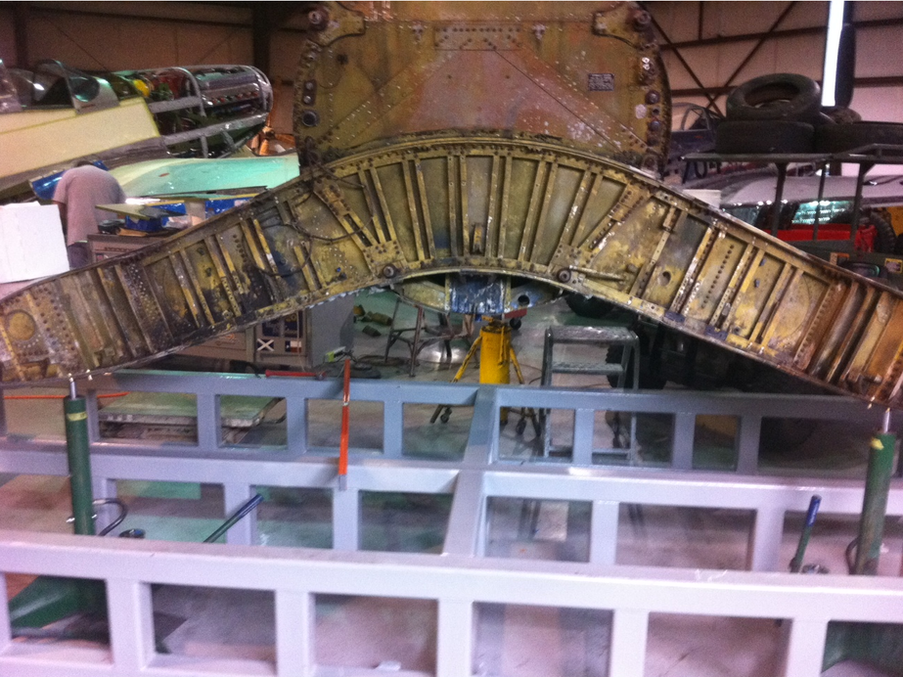
You can also see some more pics here that they uploaded onto Facebook:
http://www.facebook.com/media/set/?set=a.10150197156822233.317658.277369547232

You can also see some more pics here that they uploaded onto Facebook:
http://www.facebook.com/media/set/?set=a.10150197156822233.317658.277369547232
Re: Sikorsky Memorial Corsair to Ezell Aviation
Thu May 12, 2011 5:23 pm
Awesome. Looks like they got the jig have built for it!
Jerry
Jerry
Re: Sikorsky Memorial Corsair to Ezell Aviation
Thu May 12, 2011 9:27 pm
Saweet, guess I will ease over there next week to have a look see...
Re: Sikorsky Memorial Corsair to Ezell Aviation
Fri May 13, 2011 11:15 am
Cherrybomber13 wrote:chris,
Thanks for posting that release. I have been sitting on it unable to post off my smartphone. I have one heck of a crew of guys working their asses off up in Stratford. And yes consider this the official notice that the Sikorsky Corsair will NOT be returning to the pole. We have secured a fiberglass replica and just need to raise th funds. Sorry I have been off wix but I am in Hawaii chasing down a Hellcat.
A win, win situation all around. Equally good news that the Stratford Cirsair will not be going back on a pedestal. So where will it go?
Re: Sikorsky Memorial Corsair to Ezell Aviation
Fri May 13, 2011 2:03 pm
Maybe it should just stay in-situ
Re: Sikorsky Memorial Corsair to Ezell Aviation
Fri May 13, 2011 2:35 pm
great news for you guys. Great new logo shirt too!
Re: Sikorsky Memorial Corsair to Ezell Aviation
Fri May 13, 2011 3:05 pm
Pat Carry wrote:So where will it go?
Well........

With the success of the Corsair collaboration with Ezell's, Drew King is focusing most of his attention now on raising the estimated 1 million USD that we'll need to restore this beautiful hangar. With acquiring and operating out of this hangar we'll solve many problems that have plagued the Connecticut Air & Space Center since the beginning. While the CASC has operated out of what was once the R&D building during the Vought years, the property is restricted since its still ARMY owned, thus not allowing anyone 18 or younger on site. Anyone wishing to visit needs to come on a weekday and receive an informal safety briefing from one of the maintenance crews at the plant. The museum is also only able to be open Saturdays, Tuesdays, and Thursdays too so theres alot of motivation to try and acquire this property. Mainly for the following reasons:
1. To preserve / save an original aviation hangar c.1929.
2. To display the Corsair (when finished) in an equally important and historic location.
3. To have a public friendly location for the CASC to operate out of.
4. To educate the public on the significance of the airport, Corsair, etc.
5. To host workshops, symposiums, gatherings, parties, functions, concerts, performances, airshows, contests, and general events for the CASC, its affiliated programs, and private groups.
Im sure there are other goals / reasons why this hangar and the other structures are a perfect fit for us, but those are the ones I could think of off the top of my head.
Summary of the history and the goal
What we call the Sikorsky Memorial Airport today has in actuality existed almost the entire span of recorded aviation history. The airfield started as a simple landing spot for weary pilots up into the 1920’s. It wasn’t until 1928 - 29 that the first four buildings were erected at the field. These structures consisted of a small terminal building, the airport manager’s house (now Windsock Bar & Grill), and two aircraft hangars.
The Curtiss Flying Service at the time managed the field, which opened for flying operations on November 11, 1928. The new airfield and its possibilities also attracted Igor Sikorsky with the purchase of thirty acres of land adjacent to the airport for the erection of a new aircraft plant. The factory would continue to expand and grow into the 1940s during World War II with the arrival of Chance-Vought sharing the facilities with Sikorsky and then solely operating from there. Both Chance Vought and Sikorsky were subsidiary companies of United Technologies. The airfield would minimally expand for the next sixty years without any real thought of preservation to the four original structures that had been built decades before.
Focusing in particular, the second hangar built at the airport in 1929 has been on a steady decline for around twenty years or so with no sign of maintenance. Even still, the overall condition of this historically significant structure hasn’t changed dramatically. What must be remembered is the fact that this hangar, (built at the dawn of aviation) was purposely over-engineered. This was the case with almost any of the structures being built at the time. So while the wood roof and brick exterior are crumbling, the steel-reinforced beam structure in the roof and supporting beams that go deep into the ground are still in remarkable condition. Another mostly unknown fact to many is that aviation legends such as Charles Lindbergh, Howard Hughes, Amelia Earhart and others have all walked into that particular hangar, sheltered there aircraft there, and left an indelible impression there. Famous aircraft have also been hangared there as well. From many early flying machines, to racing aircraft, to even the prototype XF4U Corsair and its production counterparts, hundreds upon hundreds of aircraft have spent time under that roof.
The Connecticut Air & Space Center is very interested in restoring this original standing piece of aviation history (along with the three other original structures) and return them to there former glory. The end result would be a local and international cultural educational aviation center that would foster the passion of history, aviation, and flight. Through interactive and interesting exhibits, authentic historical reenactments, period aircraft and vehicles, artifact exhibitions, as well as outside venues and hostings, these four historical structures would become a powerful location for various kinds of events. We must come together and understand that if we let these buildings fall, then we are losing a part of ourselves. We must understand the value of our historic landmarks and buildings, for if we have no past to reflect upon, we have no future to build upon. We should honor these landmarks for the history that they hold and represent. For once they’re gone, the history is gone.
And now some shots from 08-09
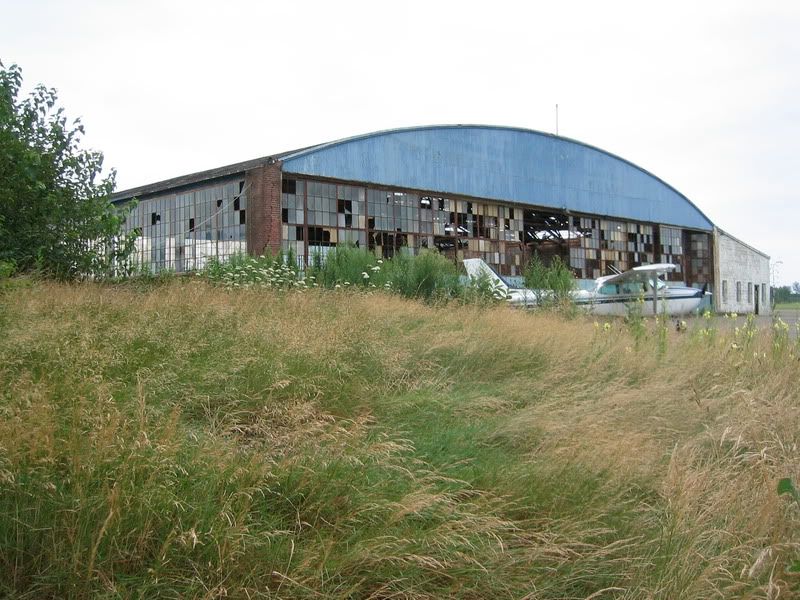
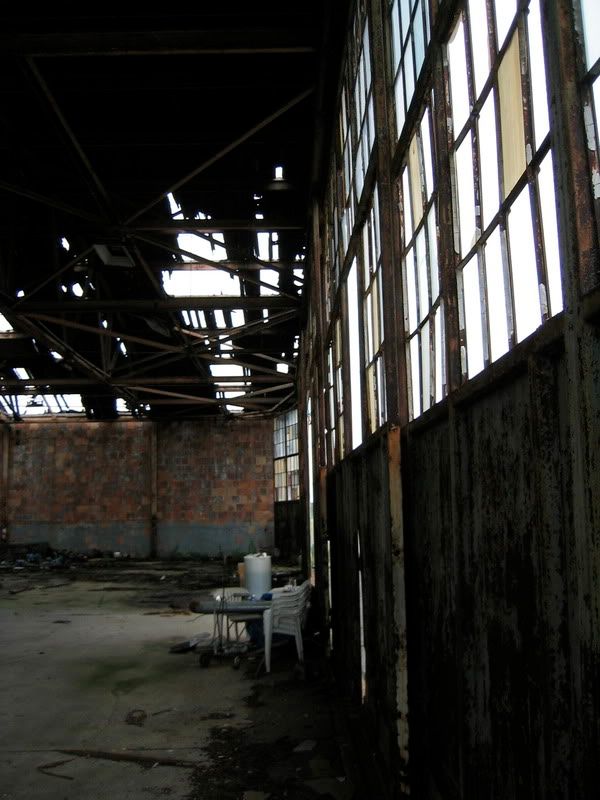
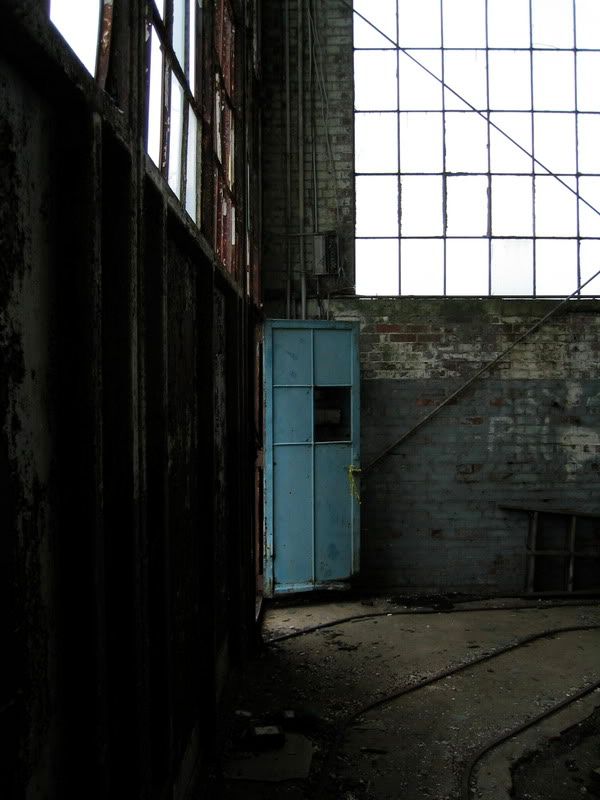
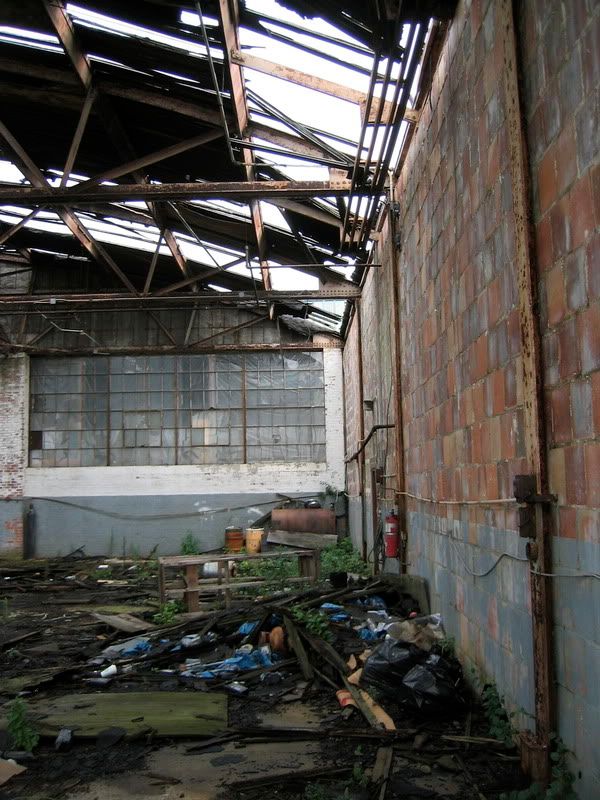
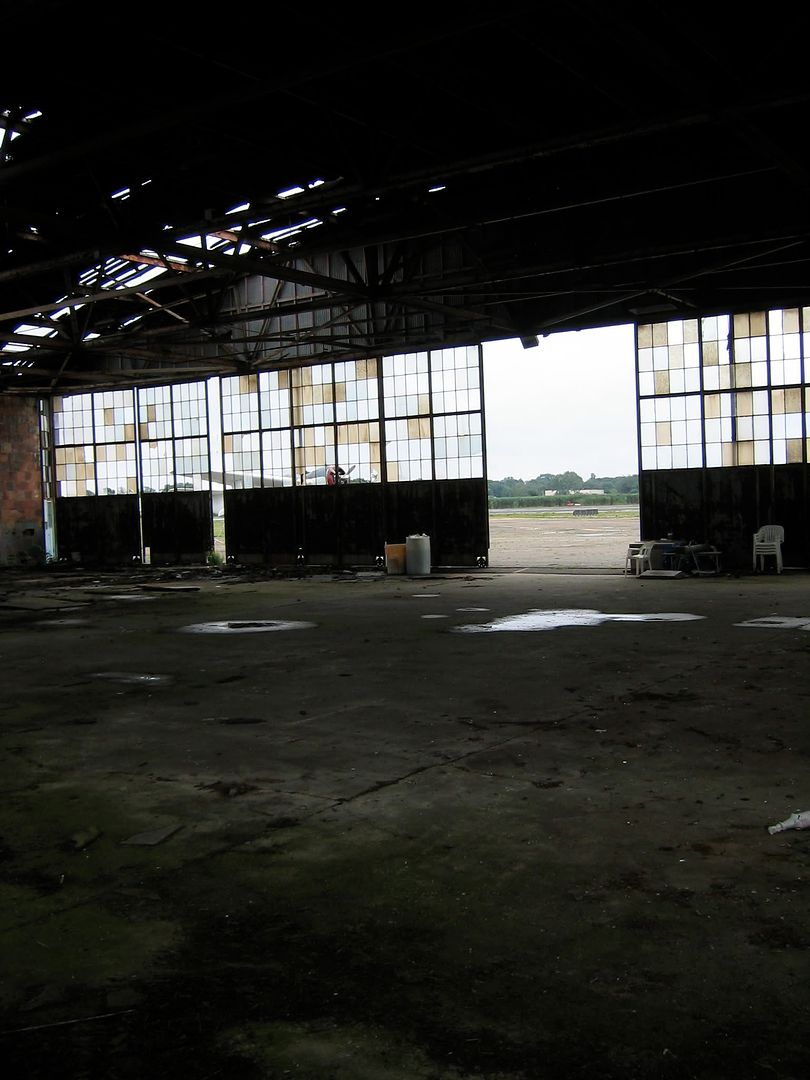
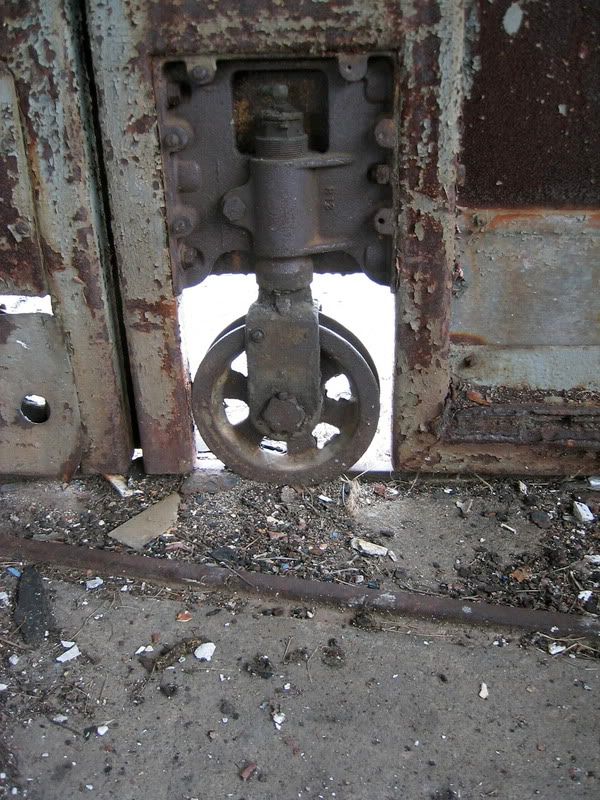
And the other Hangar:
